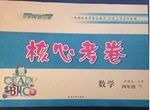题目内容
Mabel is very weak, so the doctor advised that not only _____ more food, but she should also take more exercise.
A. should she have B. she should have C. she has D. has she
A

练习册系列答案
 小学同步三练核心密卷系列答案
小学同步三练核心密卷系列答案
相关题目
题目内容
Mabel is very weak, so the doctor advised that not only _____ more food, but she should also take more exercise.
A. should she have B. she should have C. she has D. has she

 小学同步三练核心密卷系列答案
小学同步三练核心密卷系列答案